Yazd, formerly known as Yezd, is the capital of Yazd province in Iran. located 270 kilometers (170 miles) southeast of Isfahan, this ancient city is situated in the heart of the central Iranian desert. Having survived through multiple generations in an environment defined by scorching hot and dry summers, juxtaposed with bone-chilling winters, the cities architecture has developed a unique and distinctive style.
known colloquially as the ‘City of Windcatchers,’ Yazd boasts numerous examples of these iconic structures that dot its skyline. These windcatchers, or “badgirs,” offer a practical solution to harness the prevailing breezes and offer respite from the desert heat. Traditional Yazdi houses often feature central courtyards. This architectural element serves multiple purposes, providing shade, privacy, and a natural cooling effect. Buildings are often close together, creating narrow alleyways between them for self shading. The buildings feature thick walls with punched windows and screens, known as ‘Jali’ with elaborate patterns.
The project aimed to interrogate the vernacular from four aspects; Mass and relation to site, Material and thermal comfort, Facade design and finally wind.
We started the project by trying to gain an overall understand of the climate through analysis of weather data and charts from ladybug.
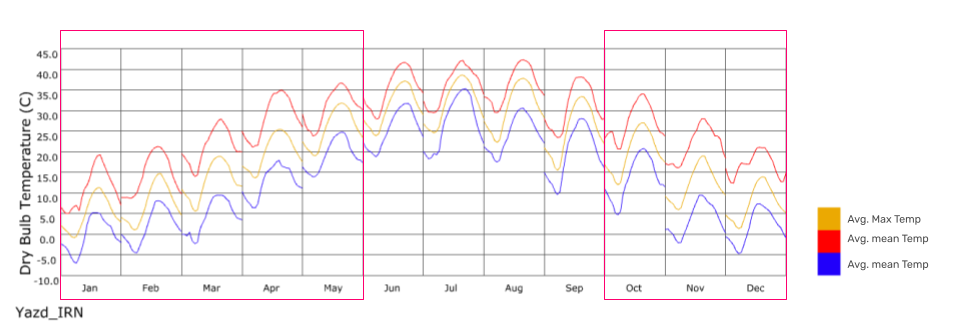
The data showed that temperatures are high through summer, with a maximum average of 42°C. This is shown between June and September. The design should look to keep the interiors cool and stop heat transfer.

Mapping comfort against the sun path shows that we must look to mitigate the extreme June and September temperatures. For the we can use solar shading matched to the incident angles of the most harmful sun positions.

The sun maintains a high position through the summer meaning the southern facade could be shaded using horizontal projections, however measures should also be taken against the low morning and evening sun in winter. Moving slats could be employed on the eastern and western facades to combat the low moving angle in the morning and evening.
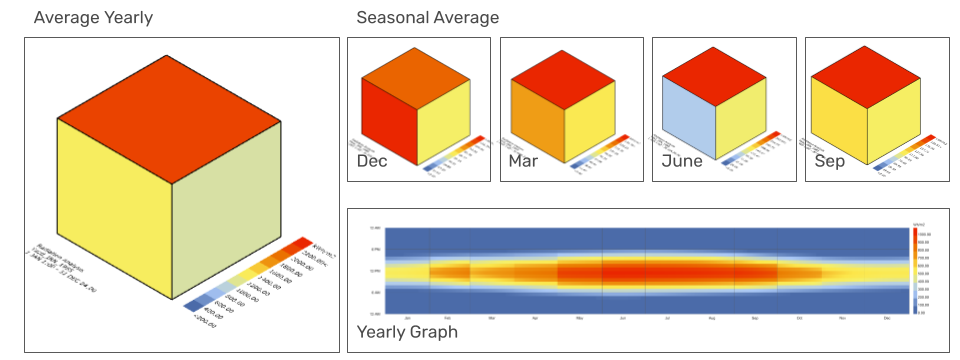
A simple block was used to gain an understanding of insolation on building geometry. The incident angle of the sun plays a key role in distributing the solar energy. The eastern facade receives a fairly consistent level of radiation, however the southern facade has great variation due to a lower winter sun and a much higher summer sun.
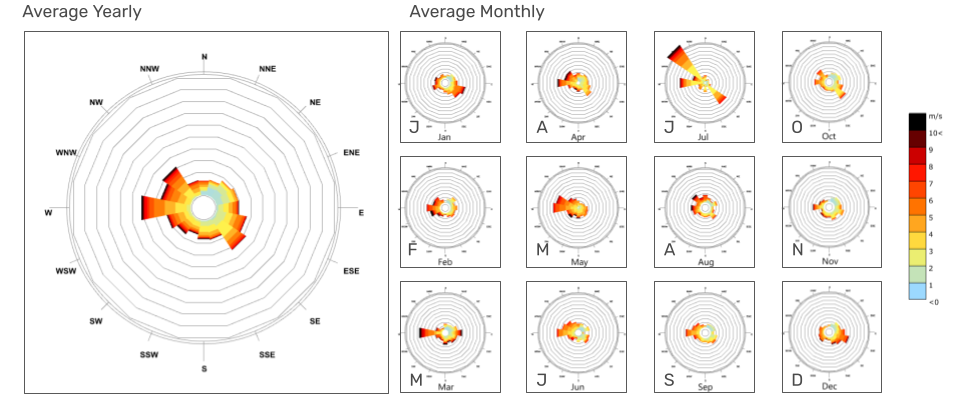
We compare the average yearly wind speeds to the monthly average. July has strong NW and SE winds which could be exploited for passive cooling strategies to mitigate heat gain. This aligns with the hottest period of the year and potentially points to why the wind catchers design has developed.

We also find the lowest levels of rainfall occur when temperatures are at their highest. This correlates with our initial anecdotal research stating that summers were dry and hot.
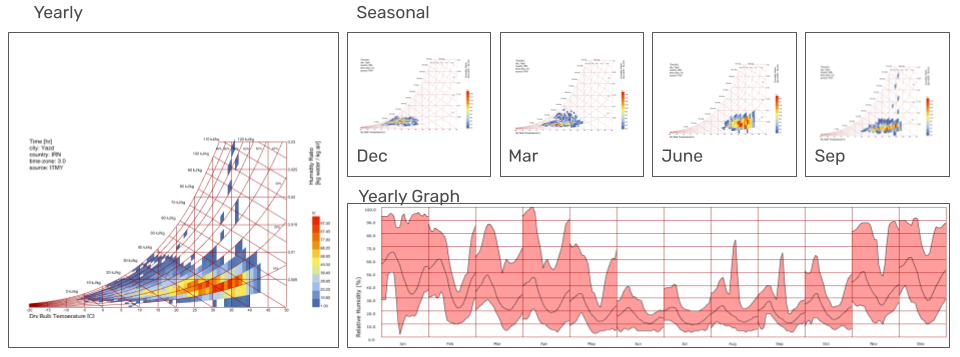
The lack of rainfall and high temperatures coming together to create a dry summer as shown in the yearly relative humidity graph above. This could create an uncomfortable environment within buildings.

The graphs above show how traditional approaches in both clothing and cooling can help to extend the thermal comfort conditions across the year.
This analysis left us with some key considerations for our approach to building and facade:
Building approach:
- Heating Demand (Winter)
- Compact building structure with deep floor plans – potentially looking at overhangs for self shading
- placing buildings close together allows them to shade eachother
- Internal courtyards for self shading and lighting
- South facing facades recieve the highest degree of radiation
Facade approach:
- Low percentage of glazing
- Could employ photovoltaic
- shading devices
- localised ventilation systems
- low thermal mass
- Light coloured materials to reflect light
The Project
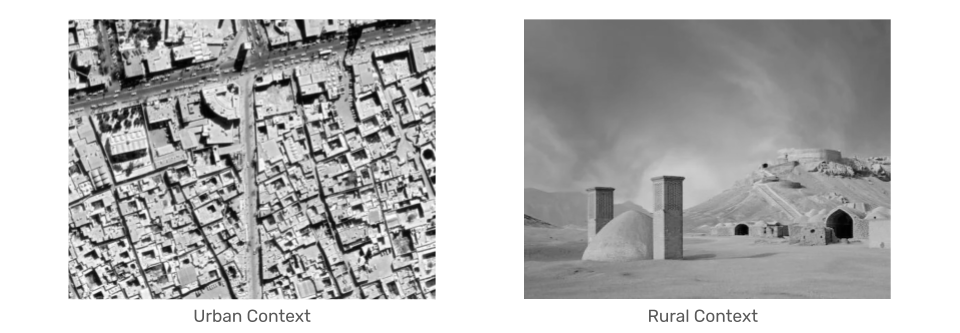
The aim of the project was to understand how the context and environment would impact design. We looked to perform tests in both and urban and a rural setting to better understand the results.
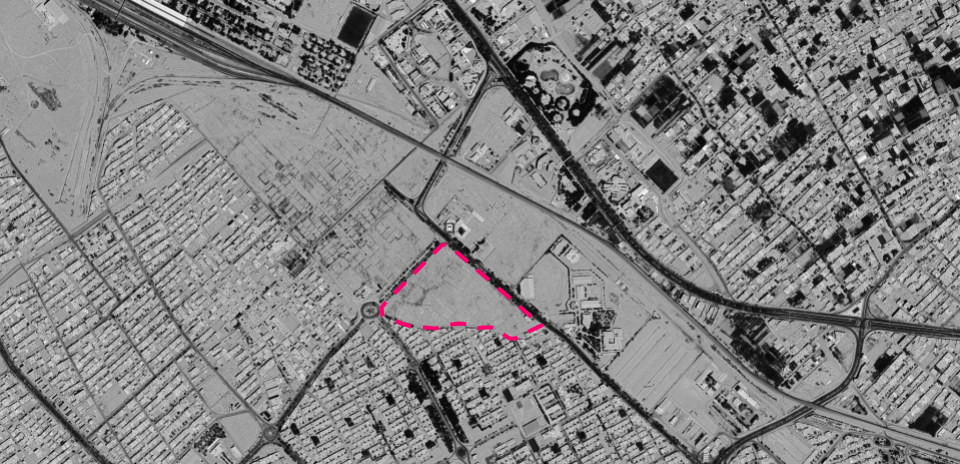
An empty site was selected near the university of Yazd which offered both conditions.
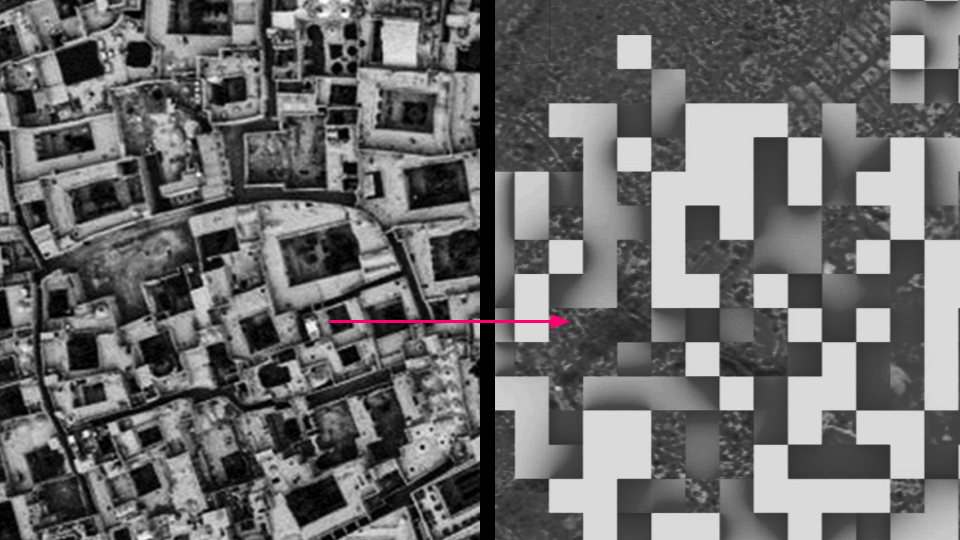

The urban fabric of the city was decoded and translated into 9×9 modules and applied to the site, providing an adaptable module that can fit different functions (singular/combined) and crating courtyards within.

This direct sun hours for this new urban fabric was then analysed. This showed the north facing massing with the lowest direct sun exposure, which could hold the possibility of having more openings. There was High exposure on the roofs – these have the potential to harvest solar energy through distributing Photo voltaic cells. East/West facing facades have a medium level of exposure and demand further exploration whilst the south facing receives the maximum.

This masterplans interaction with the wind was then tested. Initial orientation was towards prevailing winds, following vernacular context. This shows how a pressure difference is created within the courtyards, an essential part in enabling the function of the wind catchers design.

We then aimed to gain a greater understand at a building scale, following the same logic of a modular dimension we built a parametric model to test for the optimal massing.
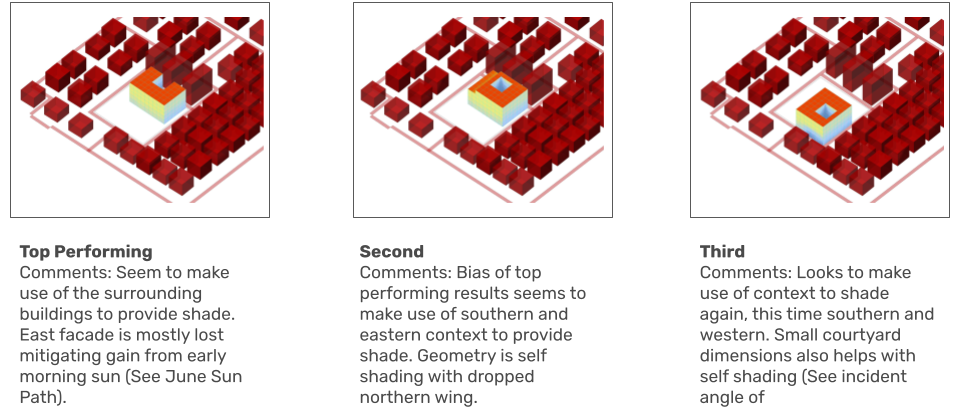
This was then test on the rural site to understand the impact of the surrounding buildings on our massing.
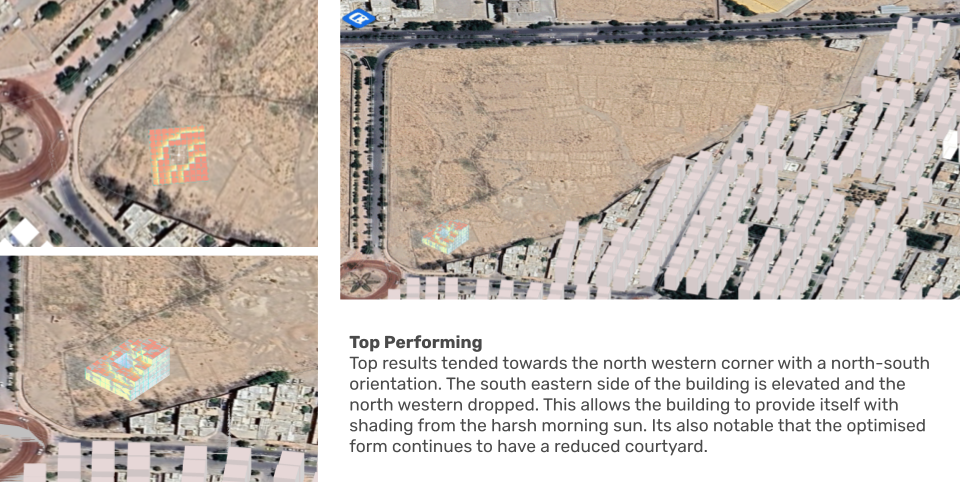

The Urban context was then tested with the wind analysis. Like the masterplan, the orientation of the building geometry and positioning of the courtyard was well placed to take advantage of the prevailing wind.
A number of studies were then produced looking a the facade design for the modules. A parametric model was developed which allowed for multiple adjustments such as number of windows, windows height and width, number of shades, shading orientation and also a variation of shading which incorporated an intricate pattern.
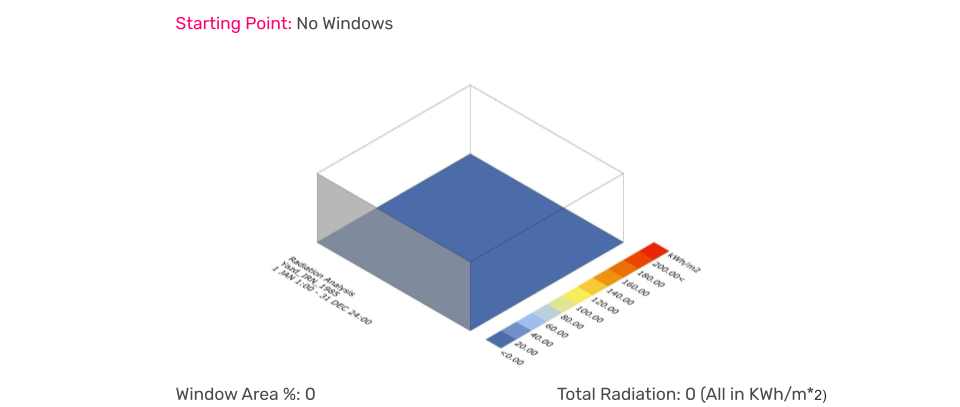
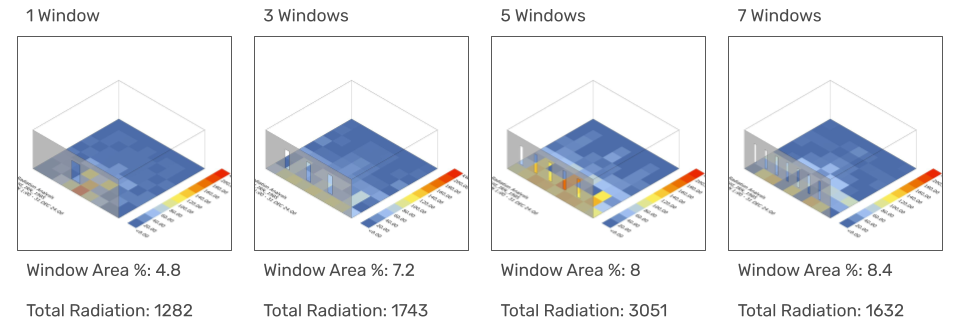
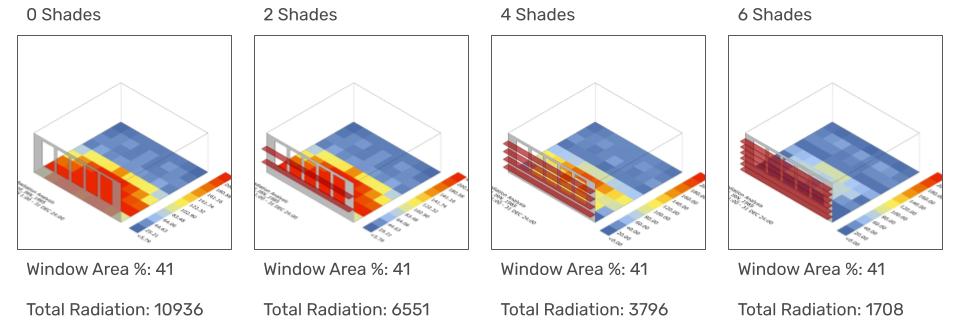
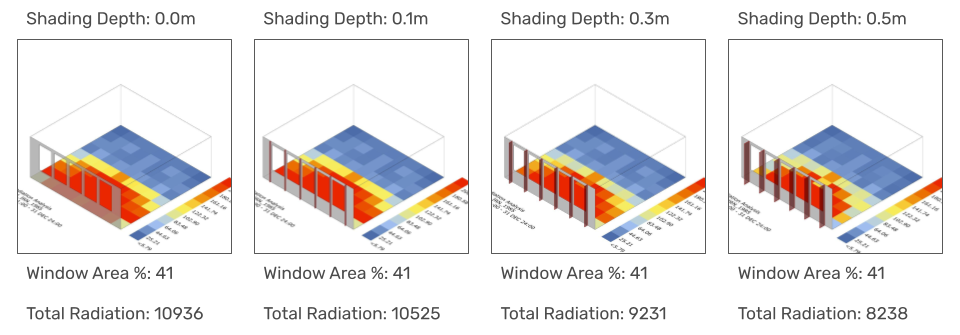
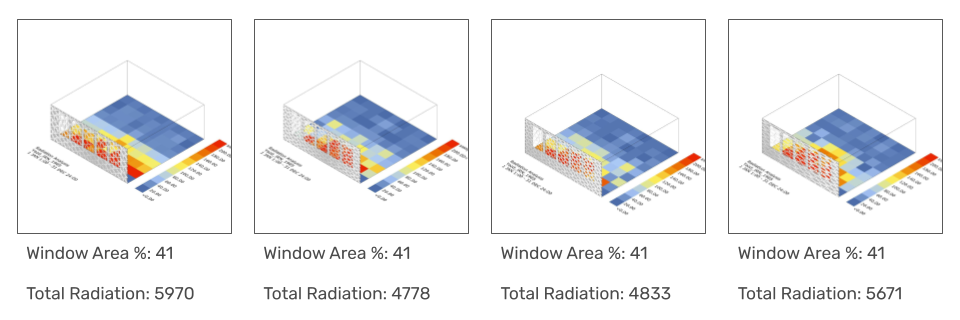
We found that the pattern provided us with the opportunity to still provide ample views out. The was possibly due to the patterns geometry being able to block multiple solar vectors due to its relationship with the facade openings.

We then looked to understand what this would mean across each of the facades. We had to cross reference the Lux values with the day lighting autonomy as most results performed well in terms of the day lighting autonomy but often these would result in over lit spaces.

We then brought together our understanding from the different aspects and produced a concept design based on what we had learnt, aiming to incorporate vernacular ideas and take advantage of the local conditions.


